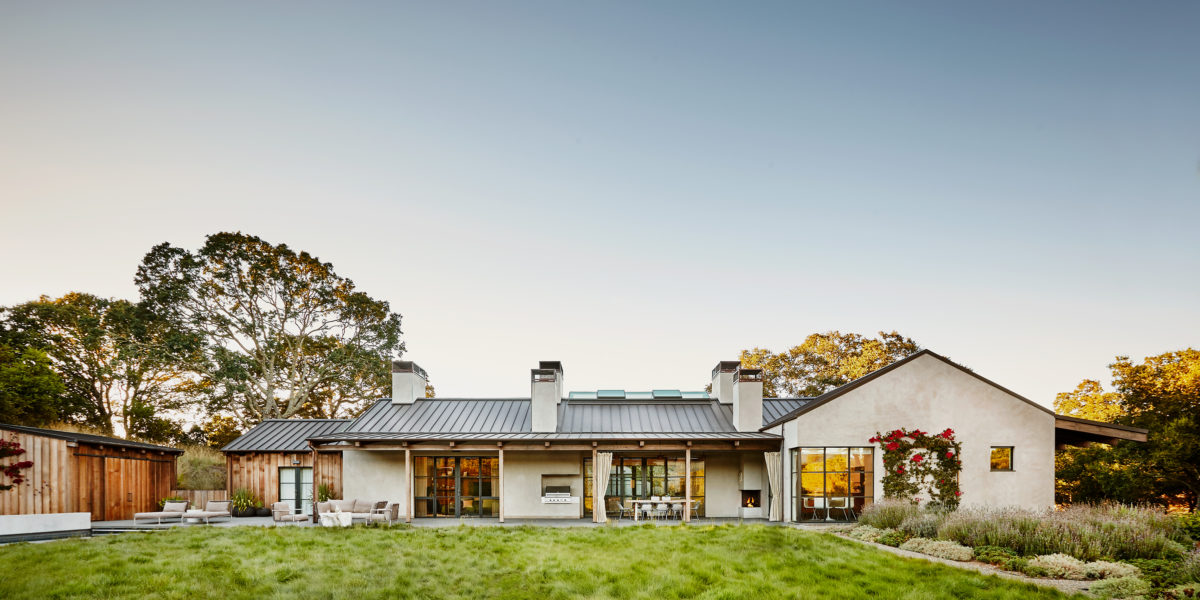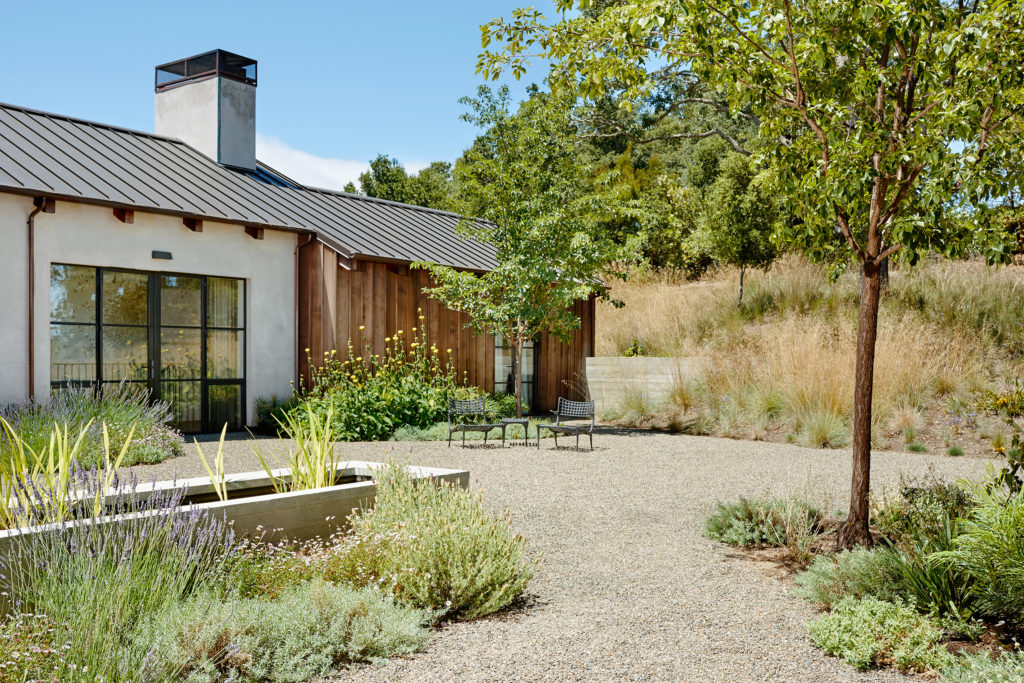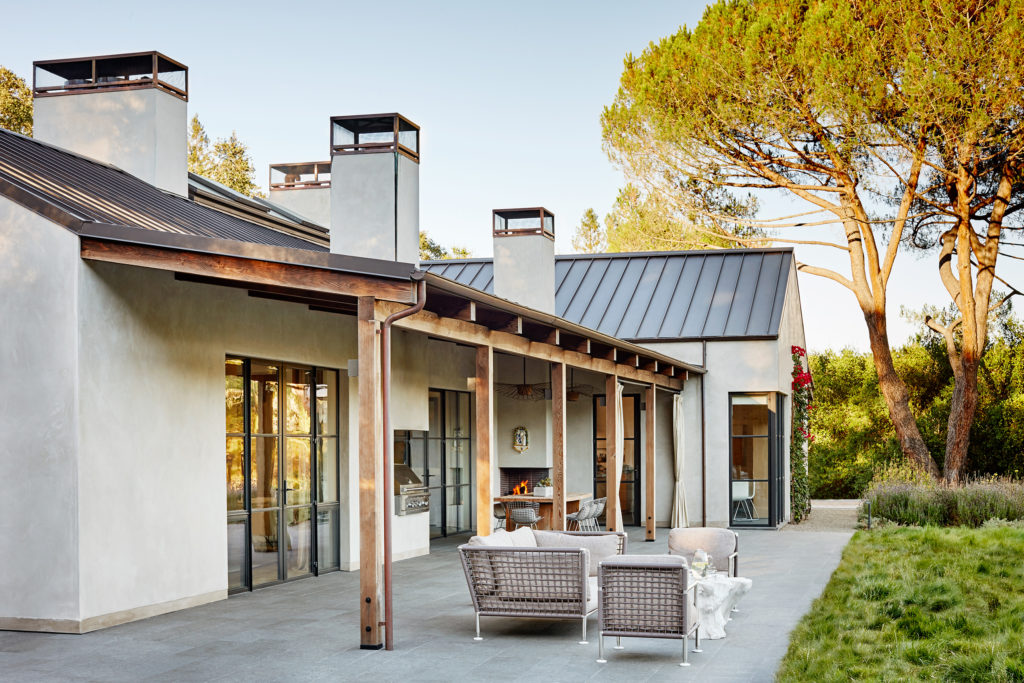
How to Create a Lawn-Like Landscape That’s Not Really a Lawn
A San Francisco architect turns back the clock on a Portola Valley home with low-water plantings and a sense of ease and permanence.

James Carriere
When Glenda Flaim, an architect with Butler Armsden Architects in San Francisco, took on the design of a family home in Portola Valley, California, she knew she wanted the landscape to look as “early California” as possible. The first step was to remove what was already there—maple trees, hydrangea, and pansies are “not what you’d find in a California native landscape,” she says. Once those plants were removed, her intention was to make the landscape “feel like we had turned back the clock.”
Flaim achieved this and more by creating a meadow in the backyard; it captures the look she was going for, but it also can be used as a kind of lawn area. The owners of the home have four boys, so they wanted something where the kids could play, but the surface wouldn’t need fertilizer and guzzle water. The answer is a native fescue mix that can be mowed a little shorter in the winter and spring, and left longer in the summer for a “tufted” look.

James Carriere
The outdoor dining area, meanwhile, needed to accommodate a large family that likes to entertain. “The husband actually grew up in Portola Valley, so they wanted to be able to host a large number of people on Thanksgiving,” Flaim says. The outdoor eating space extends off the formal dining room.
“You can open the doors and have people inside and outside,” she says. Outdoor curtains can be drawn to hold in heat from the fireplace, and you get the sense of a “room” that stays comfortable even in November and December. Bertoia chairs and Vertigo pendants by Petit Friture complete the look.

James Carriere
The house itself is a “C” shape, so there is an exterior courtyard that gives you the option to walk outdoors to get from one room to another, rather than walk through the house. The courtyard also offers a place for the owners to sit depending upon whether they want sun or shade. The untreated concrete water feature was inspired by an old farm animal trough; ad, with permeable ground cover in mind, gravel was used.

James Carriere
The same plantings from the courtyard—including Jerusalem sage, upright myrtle spurge, and lavender—were repeated throughout the property. “We didn’t want the spaces to feel disjointed,” says Flaim. “We wanted to have that flow so we used the same colors.”

James Carriere
A Corten steel staircase leads from the fescue “lawn” to a firepit and awning. The firepit, also made of Corten steel, is meant to rust and look sturdy and functional. “I love Corten steel because once it rusts it maintains its patina forever,” says Flaim. “We wanted it to feel like something that has been there for a very long time; that would sit in the landscape and not have to be maintained.” The couch is by Restoration Hardware. The chair is the Maia Relax Armchair by Kettal.

James Carriere
In the end, making sure that the landscape looked original rather than brand new has given the house and its environs a kind of tranquility and artistry that’s easy to admire, without being showy. That was the point. “The idea for this landscape was to make sure that when we were done it looked like it may have 100 years ago,” says Flaim. “That’s what makes this different than a lot of projects.”
